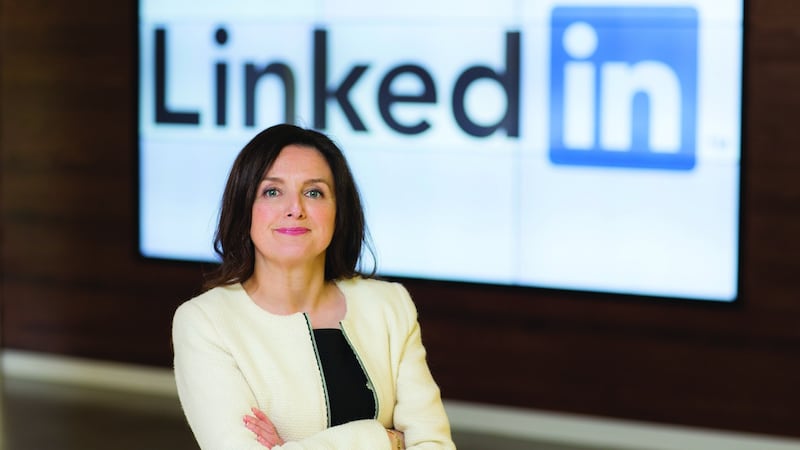It affects half your customers, attracts top talent to your company and produces better results. And still, many business owners have yet to get the message. Hiring women is good for business.
Forty years since women surged into the workforce, they now comprise just 14 per cent of CEOs and 10.5 per cent of publicly-listed company board members. The majority of graduates are female, and men and women enter the workforce largely in parity, but it is only as they progress through the ranks that gaps begin to appear, according to a study by DCU and figures from the 30% Club, an organisation of senior managers which aims to raise the female representation on boards to a minimum of 30 per cent.
While it is illegal to discriminate on the basis of gender, sexuality, religion or nationality under EU law, it is difficult if not impossible to distinguish between a decision that is purely business and one coloured by bias.


"Our environment and how we are brought up affects who we are," says Anne Heraty, CEO of publicly listed recruitment agency CPL and a member of the Chairs Advisory Board of the 30% Club. "From working in recruitment, I know there is a lot of unconscious bias in certain industries. For instance, women leaders are described differently to male leaders, when in reality the traits they have in practical terms are broadly similar."
The business benefits
While Heraty does not believe in gender-specific traits, she does stress that women have significant purchasing power. And since most consumers are women, it makes sense that an increased female presence in a company will yield a greater understanding of the market.
This chimes with figures in the latest GEM Report for Ireland, which shows that almost half of early-stage female entrepreneurs are focused on consumer-orientated services (48%), compared to only a fifth of male entrepreneurs.
The senior director of internal operations at LinkedIn Ireland, Sharon McCooey, cites high levels of employee satisfaction and low levels of attrition for their industry as the benefits of gender diversity. “We have seen significant growth in the past five years, and we believe employee satisfaction contributes to these results,” she says.
Gender quotas
The idea of gender quotas as a way of speeding up equality has always been controversial. At the current rate, it is estimated that it will be 70 years before gender equality reaches all workplaces. However, the fear is that the same discrimination problem - hiring and promoting on the basis of gender - is being used to fuel a solution, not to mention concerns that unsuitable people will be promoted and that it gives the appearance of equality without addressing the underlying problem.
The study conducted by DCU and the 30% Club shows that the number of women in certain roles decreases in proportion to the seniority of the position. Women were particularly under-represented in certain functions within a company, occupying between ten per cent and 30 per cent of the jobs in finance, sales, operations and IT departments and as these are high paying roles, this could be a significant contributor to the gender pay gap. The study also shows that the number of women in senior management increased significantly when headed by a female CEO. The female workforce rose to 38 per cent with a female CEO versus 21 per cent with a male boss.
LinkedIn Ireland enjoys a 50/50 gender balance from top to bottom and states therefore that the gender pay gap “is not something we have to deal with”. McCooey puts this down to the fact that the company has been just six years in Ireland and has a culture free of historical factors.
Maternity and pay
A comprehensive 2015 study from the US showed that the average mother is paid 31.1 per cent less than the average father. This compares with an overall US gender pay gap of 25.6 per cent in favour of men, and 0.0 pay gap between single women with no children, suggesting that maternity affects women’s advancement.
“The problem is,” says McCooey, “most careers still work on momentum: if you do well you get good projects, then you are promoted, then you might take a year out and come back in, still do well, then take another year out, and in the meantime your opposite number has two years more experience. Then you can see where the problem arises. But if it’s based on the quality of work and results, you get a much better outcome.”
One of the challenges of returning to work is childcare, and seeking a more flexible way of working. This can be a concern for employers also, who wish to keep talented employees but fear that flexibility at work breeds inconsistent output.
“As 80 per cent of my staff are women, maternity leave is the biggest threat to my business,” says Mary McKenna, CEO of Tour America. “In my experience, I haven’t seen mothers return to full-time work after maternity leave, but as a modern company you have to be committed to society, so I give my employees the option to work from home. If you want your customers to get the best service available, you have to trust your staff and put them first.”
Taking action
There are many incentives for companies to adopt a more inclusive company culture, but instigating that change can be a challenge for business leaders who are unsure where to begin. “I think training in unconscious bias is enlightening,” recommends McCooey. “It’s also important to have a balanced slate when recruiting, and to have a female at every stage. If females go through an interview process without meeting another woman, they’re less likely to want to work there. LinkedIn also has a global programme called ‘An Act of Inclusion’ which came from that unconscious bias training. We ask people to commit to one act of inclusion, which could be as simple as calling someone who is on maternity leave and filling them in on what’s happening. That’s not too difficult but if everyone does it, it brings about seismic change.”
CASE STUDY: Diversity at Dell
Ingrid Devin is talking herself out of a job. She hopes. As EMEA diversity & inclusion lead at Dell, part of Ingrid Devin's role is to help engender the right corporate culture that is open to diversity and embraces women.
“You can have a 50/50 gender split, but if the culture isn’t right, you’ll have a revolving door. That’s why it scares me when companies say they’re focusing on recruitment,” she says.
Dell hosts a range of programmes that support gender diversity, including advancing your career, women in leadership, and the emphasis on role models within the company. Their latest, ‘Men Advocating Real Change’ (MARC), is focused on changing mindsets and tackling biases that can affect how decisions are made, how promotions are made, and how business is done in general. And it’s working. At Dell in Ireland, a third of the leadership team are now women, up from 20 per cent three years ago.
Why is Dell focusing on diversity in the workplace? “It just makes business sense,” says Devin. “First of all, we’re educating our leaders through this training; 900 people go through the MARC programme in September, plus 100 ambassadors who lead it. Secondly, because of our focus on diversity, our managers are appealing to a greater number of people, and that makes Dell a more attractive place to work, thus attracting better talent. It’s all about hiring the right talent.
“There’s also the freedom that increases quality of work. One employee said to me last year ‘I came out in work and one of the biggest surprises to me was that I was way more effective at my job’. If you’re hiding who you are, that takes a lot of effort.”
The STEM problem
There is growing gender diversity challenge for businesses in STEM (science, technology, engineering and maths). In 1985, for example, 37 per cent of computer and science graduates in the US were women, but this had fallen to 18 per cent by 2014.
“We have a programme where we go to secondary schools to talk about the tech industry and a bit about Dell. But what we’re discovering is that speaking to Transition Year students is sometimes too late. Research is showing that girls are making their mind up as early as eight to ten years of age. I think the challenge is that parents often advise their children on what they should do, but they might not be aware of the new roles available in tech.”
Devin believes that looking after mothers in the workplace is important, and so connectivity with mothers on maternity leave is encouraged. But it’s not just about the mother.
“We also have a “connected workplace” scheme, which means we can choose to work at home if needed. There needs to be a focus on the parental rather than maternal role, and if you do that, you strengthen the man’s position at home and the woman’s in the workplace.
“The ultimate goal is to achieve a workplace where everyone has the opportunity to be successful, has an inclusive culture and where you don’t need people like me.”










